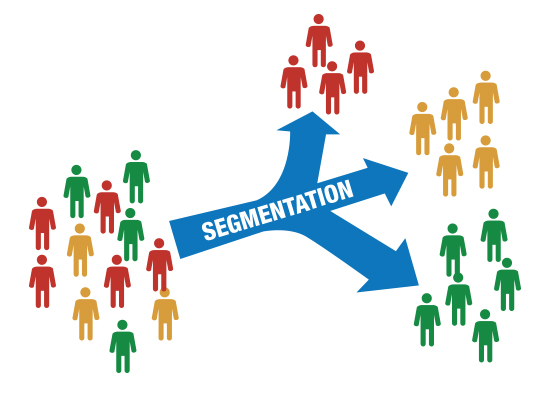- How to manage the complexity of selling to more customers?
- How to group them in the best way?
- How to identify the most profitable?
- How to identify the most likely to respond to a commercial promotion?
- How to better focus efforts and resources?
These are the typical questions that any company must answer for being able to make decisions on purchasing, supply, promotions, etc. Surprisingly, these high monetary value decisions frequently are based on feeling and intuition.
The complexity of clients
In its quest to grow, companies looking to sell to more customers, thus face greater diversity of needs, demands and patterns of behavior that must satisfy. Unfortunately, not all customers contribute equally to profitability; instead, the complexity of operating the business increases. Then there is the proliferation of products, which in turn increases complexity How to deal with it?
The most effective way to tackle this complexity is through a strategy that focuses the efforts of the company in certain market segments with different proposals.
The strategy part of market understanding. While it is common for companies seeking to understand their market, few really take it seriously and are good for this. This includes understanding customer segments, their needs, development and profitability. In the end the game, it is important to segment: understanding what segments exist and compete in one of the core competencies that a company should have.
Segmentation
Segmentation is the practice of classifying customers into groups, based on their multidimensional information (socio-demographic characteristics, patterns of purchase and use, preferences, needs and attitudes). It allows for identifying the factors that best describe the behavior of each group or segment, and that differ from others.
A robust segmentation exercise commonly relies on predictive analytic models that help discover patterns of similarity and difference among customers. Using such models ensures that the segmentation is objective, can synthesize a large amount of data, and allows for finding patterns that are indistinguishable to the naked eye.
How many segments should exist? There is no exact answer. And if there were, it would be temporary, the dynamism of the market itself. What must exist are robust processes for the analysis of data from multiple sources, and the definition and generation of strategies for each segment.
Segmentation consists of several steps:
- Determine the business objective (for example, to identify cross-selling opportunities, improve profitability of promotions, identify customers likely to cancel)
- Define data requirements and sources
- Collect the data
- Develop data analysis methods for segmentation
- Validate segmentation results
- Define and implement actions to achieve the objectives
Benefits
Customer segmentation has multiple benefits for all types of businesses:
- Identifying the most / least profitable customers.
- Generating value propositions by segment, avoiding having a single tender for all clients and a unique offer for each.
- Focus sales efforts on customers who are most likely to buy products and services.
- Development of more predictable and profitable promotions.
- Identification of cross-selling opportunities.
- Relationship building of customer loyalty by offering products and services that meet their needs.
- Identifying customers more likely to cancel services.
- Development of retention and reward programs.
- Improved customer service.
- Using resources more efficiently and effectively.
Conclusions
Customer segmentation allows you to answer questions like: what segments are involved, because, what it takes to be successful and in which not to participate. And not do it just once, but continuously. Companies that do this better than their competitors have an advantage for two reasons. First, they misunderstand what game to play, where to participate and where not to participate. Second, they understand better than others what it takes to be successful in their participation.
